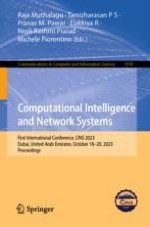This book constitutes the proceedings of the First International Conference, CINS 2023, held in Dubai, United Arab Emirates, from October 18 to 20, 2023.
The 11 full papers included in this volume were carefully reviewed and selected from 130 submissions. This volume discusses contemporary challenges within computing systems and the utilization of intelligent approaches to improve computing methodologies, data processing capabilities, and the application of these intelligent techniques. The book also addresses several topics pertaining to networks, including security, network data processing, networks that transcend boundaries, device heterogeneity, and advancements in networks connected to the Internet of Things, software-defined networks, cloud computing, and intelligent networks.
